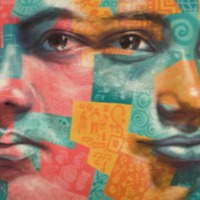
Deborah
There is an estimated 48,000 people living in modern slavery in Libya (GSI 2018). Libya is a major transit destination for migrants and refugees hoping to reach Europe by sea. Human trafficking networks have prospered amid lawlessness, created by the warring militias that have been fighting for control of territories since the toppling of Muammar Gaddafi in 2011. Highly organized trafficking and migrants smuggling networks that reach into Libya from Niger, Nigeria, Chad, Eritrea, Ethiopia, Somalia, Sudan, and other sub-Saharan states subject migrants to forced labor and forced prostitution through fraudulent recruitment, confiscation of identity and travel documents, withholding or non-payment of wages, debt bondage, and verbal, physical, and sexual abuse. In some cases, migrants reportedly pay smuggling fees to reach Tripoli, but once they cross the Libyan border they are sometimes abandoned in southern cities or the desert where they are susceptible to severe forms of abuse and human trafficking. Deborah left her home in Nigeria because her stepmother treated her badly. She wanted to become a fashion designer and when she met a man who promised to take her to Europe, she gladly accepted. It was a big surprise to her when after arriving in Libya, she was told that the journey stopped there, and she had to start working as a prostitute.
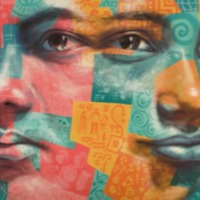
Haya
There are an estimated 4,000 people living in modern slavery in Qatar (GSI 2018). Qatar is a destination country for men and women subjected to forced labour and, to a much lesser extent, forced prostitution. Men and women from Nepal, India, Pakistan, Bangladesh, the Philippines, Indonesia, Sri Lanka, Sudan, Kenya, Nigeria, Uganda, and other countries voluntarily migrate to Qatar as unskilled laborers and domestic workers, often paying illegal and exorbitant fees to unscrupulous recruiters in the labour-sending countries, thereby increasing their vulnerability to debt bondage. Some workers subsequently face conditions indicative of involuntary servitude, to include restricted movement, payment withholding, passport confiscation, exit permit retention, and threats of deportation or abuse. Individuals in Qatar sell visas to migrants and occasionally demand regular payments, enabling migrant workers to work illegally and without legal recourse against their respective sponsors, although reportedly this trend is on the decline. Haya* travelled to Qatar for work but found herself trafficked into domestic service where she also experienced sexual abuse, beatings, and restrictions to her movement.
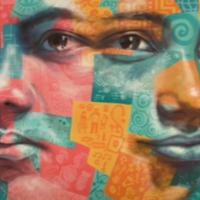
Lakshmi
There are an estimated 4,000 people living in modern slavery in Qatar (GSI 2018). Qatar is a destination country for men and women subjected to forced labour and, to a much lesser extent, forced prostitution. Men and women from Nepal, India, Pakistan, Bangladesh, the Philippines, Indonesia, Sri Lanka, Sudan, Kenya, Nigeria, Uganda, and other countries voluntarily migrate to Qatar as unskilled laborers and domestic workers, often paying illegal and exorbitant fees to unscrupulous recruiters in the labour-sending countries, thereby increasing their vulnerability to debt bondage. Some workers subsequently face conditions indicative of involuntary servitude, to include restricted movement, payment withholding, passport confiscation, exit permit retention, and threats of deportation or abuse. Individuals in Qatar sell visas to migrants and occasionally demand regular payments, enabling migrant workers to work illegally and without legal recourse against their respective sponsors, although reportedly this trend is on the decline. Lakshmi was trafficked from India to Qatar into domestic servitude, the age of 24. She was sexually abused and beaten by her employers who took away her documents. When she asked to go back to India she was told she would have to pay. The harassment continued until her case was taken up by the Indian embassy in Qatar.
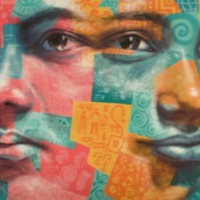
Brian
There are an estimated 403,000 people living in modern slavery in the United States (GSI 2018). Sex trafficking exists throughout the country. Traffickers use violence, threats, lies, debt bondage and other forms of coercion to compel adults and children to engage in commercial sex acts against their will. The situations that sex trafficking victims face vary, many victims become romantically involved with someone who then forces them into prostitution. Others are lured with false promises of a job, and some are forced to sell sex by members of their own families. Victims of sex trafficking include both foreign nationals and US citizens, with women making up the majority of those trafficked for the purposes of commercial sexual exploitation. In 2015, the most reported venues/industries for sex trafficking included commercial-front brothels, hotel/motel-based trafficking, online advertisements with unknown locations, residential brothels, and street-based sex trafficking. Brian* was trafficked by his dad when he was eleven years old. He was taken to an old house for child sexual exploitation. He was locked in a basement and raped, drugged, and beaten by different men.

Rebecca
There are an estimated 403,000 people living in modern slavery in the United States (GSI 2018). Sex trafficking exists throughout the country. Traffickers use violence, threats, lies, debt bondage and other forms of coercion to compel adults and children to engage in commercial sex acts against their will. The situations that sex trafficking victims face vary, many victims become romantically involved with someone who then forces them into prostitution. Others are lured with false promises of a job, and some are forced to sell sex by members of their own families. Victims of sex trafficking include both foreign nationals and US citizens, with women making up the majority of those trafficked for the purposes of commercial sexual exploitation. In 2015, the most reported venues/industries for sex trafficking included commercial-front brothels, hotel/motel-based trafficking, online advertisements with unknown locations, residential brothels, and street-based sex trafficking. Rebecca was trafficked in Indiana, USA when she was twenty-one-years old. After being sexually assaulted at the age of fourteen, Rebecca began acting out and struggled with depression, anxiety, and began experimenting with drugs and alcohol. When she was twenty-one, she met a man almost twice her age and moved in with him just three weeks later. The man introduced her to crystal meth, controlled her movement and sold her to men for sex. Rebecca tells of how, despite leaving her trafficking situation, she struggled to come to terms with her exploitation and it affected her life for years afterwards
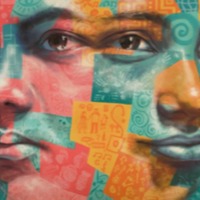
Courtney
There are an estimated 403,000 people living in modern slavery in the United States (GSI 2018). Sex trafficking exists throughout the country. Traffickers use violence, threats, lies, debt bondage and other forms of coercion to compel adults and children to engage in commercial sex acts against their will. The situations that sex trafficking victims face vary, many victims become romantically involved with someone who then forces them into prostitution. Others are lured with false promises of a job, and some are forced to sell sex by members of their own families. Victims of sex trafficking include both foreign nationals and US citizens, with women making up the majority of those trafficked for the purposes of commercial sexual exploitation. In 2015, the most reported venues/industries for sex trafficking included commercial-front brothels, hotel/motel-based trafficking, online advertisements with unknown locations, residential brothels, and street-based sex trafficking. Courtney* was a member NXIVM, a well-known American cult that engaged in sex trafficking, forced labour, and racketeering run by founder Keith Raniere. She tells about her experience of the ESP programme, being branded and forced to have sex with Raniere.
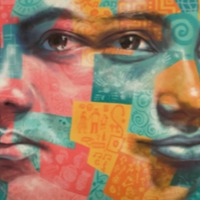
Dian W.
There are an estimated 61,000 people living in modern slavery in Saudi Arabia (GSI 2018). It is a source and destination country for men and women trafficked from South and South East Asia and Africa. People voluntarily migrate to the country to work in a variety of sectors including construction and domestic service; many of these workers are vulnerable to forced labour. Traffickers and brokers often illegally recruit migrants to work in Saudi Arabia and subsequently forced them into domestic servitude or debt bondage. Female domestic workers are particularly at risk of trafficking due to their isolation inside private residences. Non-payment or late payment of wages remains a complaint from foreign workers, while employer's withholding of worker's passports remains a significant problem. Trafficking perpetrators include businesses of all sizes, private families, recruitment companies in both Saudi Arabia and labor-sending countries, and organized criminal elements. Dian W. travelled to Saudi Arabia as a domestic worker, but what she found was physical and sexual abuse. She was raped by her employer and his son, having a baby as a result of the assaults. Dian ran away to the embassy shelter with her child in the hopes of returning home.
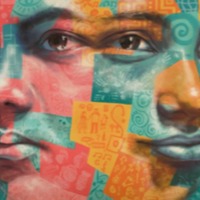
Rebekah Begay
There are an estimated 403,000 people living in modern slavery in the United States (GSI 2018). Sex trafficking exists throughout the country. Traffickers use violence, threats, lies, debt bondage and other forms of coercion to compel adults and children to engage in commercial sex acts against their will. The situations that sex trafficking victims face vary, many victims become romantically involved with someone who then forces them into prostitution. Others are lured with false promises of a job, and some are forced to sell sex by members of their own families. Victims of sex trafficking include both foreign nationals and US citizens, with women making up the majority of those trafficked for the purposes of commercial sexual exploitation. In 2015, the most reported venues/industries for sex trafficking included commercial-front brothels, hotel/motel-based trafficking, online advertisements with unknown locations, residential brothels, and street-based sex trafficking. Rebekah Begay was sexual abused at a young age by her family and by her first boyfriend. Begay developed a drug addiction and ran away, flying to Atlanta to live with her sister. When she was 16 years old, Begay met a man on a dating website, but after a few months he took her to a house and sold her into prostitution. She was able to run away when one of the men she had been sold to was distracted but the experience had lasting effects.
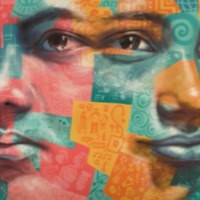
Sutiati S.
There are an estimated 61,000 people living in modern slavery in Saudi Arabia (GSI 2018). It is a source and destination country for men and women trafficked from South and South East Asia and Africa. People voluntarily migrate to the country to work in a variety of sectors including construction and domestic service; many of these workers are vulnerable to forced labour. Traffickers and brokers often illegally recruit migrants to work in Saudi Arabia and subsequently forced them into domestic servitude or debt bondage. Female domestic workers are particularly at risk of trafficking due to their isolation inside private residences. Non-payment or late payment of wages remains a complaint from foreign workers, while employer's withholding of worker's passports remains a significant problem. Trafficking perpetrators include businesses of all sizes, private families, recruitment companies in both Saudi Arabia and labor-sending countries and organized criminal elements. Suiati travelled from Indonesia to Saudi Arabia to support her family. She was prevented from contacting her family or leaving her employer for over nine years.
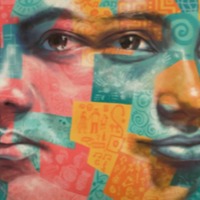
Haima G.
There are an estimated 61,000 people living in modern slavery in Saudi Arabia (GSI 2018). It is a source and destination country for men and women trafficked from South and South East Asia and Africa. People voluntarily migrate to the country to work in a variety of sectors including construction and domestic service; many of these workers are vulnerable to forced labour. Traffickers and brokers often illegally recruit migrants to work in Saudi Arabia and subsequently forced them into domestic servitude or debt bondage. Female domestic workers are particularly at risk of trafficking due to their isolation inside private residences. Non-payment or late payment of wages remains a complaint from foreign workers, while employer's withholding of worker's passports remains a significant problem. Trafficking perpetrators include businesses of all sizes, private families, recruitment companies in both Saudi Arabia and labor-sending countries and organized criminal elements. Haima G. travelled to Saudi Arabia for work to help her family. Relatives deceived Haima G. about her promised job abroad. Her agent sexually harassed her, and her employer threatened to return her to her abusive agent if she complained. Her employer sexually assaulted her, retained her passport, and locked her in the workplace so that she could not escape.
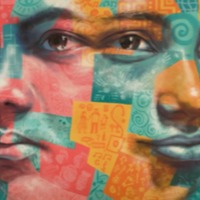
Muneera
It is estimated that almost 8 million people are living in conditions of modern slavery in India (GSI 2018). The skewed sex ratio in some regions of India has fuelled the trafficking and selling of women and young girls as brides within India. Women are reportedly sold off into marriage by their families, sometimes at a young age, and end up enduring severe abuse, rape and exploitation by their husbands. It is also reported that women and girls from impoverished backgrounds have been lured by promises of marriage by younger men from urban areas, then forced into sex work once married. Muneera Beguma was just 12 years old when she was sold into marriage with a man aged 70. She was locked up and subjected to physical and sexual abuse. Eventually he divorced her over the phone. Muneera filed a police case and authorities arrested the middleman involved in selling her.
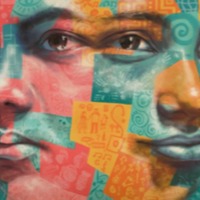
Melody
There are an estimated 136,000 people living on conditions of modern slavery in the United Kingdom (Global Slavery Index 2018). According to the 2017 annual figures provided by the National Crime Agency, 5, 145 potential victims of modern slavery were referred through the National Referral Mechanism in 2017, of whom 2,454 were female, 2688 were male and 3 were transgender, with 41% of all referrals being children at the time of exploitation. People are subjected to slavery in the UK in the form of domestic servitude, labour exploitation, organ harvesting and sexual exploitation, with the largest number of potential victims originating from Albania, China, Vietnam and Nigeria. This data however does not consider the unknown numbers of victims that are not reported. Melody was brought from Nigeria to the UK by a family friend at 12 years old. Upon arrival she was taken to a woman’s house where she was forced to clean every day for long hours under constant verbal abuse. This woman started bringing men to the house to sexually abuse Melody. Melody was kicked out of the house one day when she refused to sleep with one of the men the woman had brought to her. She spent months homeless on the street where she was subjected to further sexual violence. She was finally able to leave her situation with the help of an advisor from Refugee Council.
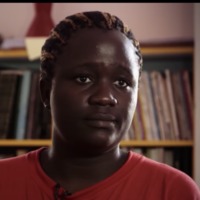
Jessie
There are an estimated 10,000 people living in modern slavery in Lebanon (GSI 2018). Human traffickers exploit domestic and foreign people in Lebanon, and people from the country abroad. Women and girls from South and Southeast Asia and an increasing number from East and West Africa are subjected to domestic servitude in Lebanon. Lebanese government officials and NGOs report most employers withhold their workers passports, putting them at risk of trafficking. NGOs also report that abuse of domestic is underreported. Many migrant workers arrive in Lebanon through legal employment agencies, but are subsequently exploited or abused by their employers; some employment agencies recruit workers through fraudulent or false job offers. Jessie travelled from Kenya to Lebanon to take up employment as a domestic worker. She was subjected to long hours and sexual harassment from her employer. One day she finally decided to escape, tying bed sheets together and climbing out the window.
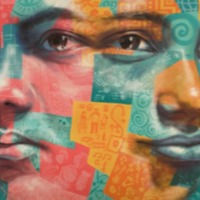
Kat Rosenblatt
There are an estimated 403,000 people living in modern slavery in the United States (GSI 2018). Sex trafficking exists throughout the country. Traffickers use violence, threats, lies, debt bondage and other forms of coercion to compel adults and children to engage in commercial sex acts against their will. The situations that sex trafficking victims face vary, many victims become romantically involved with someone who then forces them into prostitution. Others are lured with false promises of a job, and some are forced to sell sex by members of their own families. Victims of sex trafficking include both foreign nationals and US citizens, with women making up the majority of those trafficked for the purposes of commercial sexual exploitation. In 2015, the most reported venues/industries for sex trafficking included commercial-front brothels, hotel/motel-based trafficking, online advertisements with unknown locations, residential brothels, and street-based sex trafficking. Kat Rosenblatt grew up in an abusive home in South Florida. After her mother left her father and too Kat to a hotel, Kat was befriended by a young girl who over the course of a month groomed her into sex tourism. The first time Kat Rosenblatt’s traffickers attempted to sell her to an older man, she resisted and was left for dead in the street. Though she was able to escape this situation, Kat was trafficked again by a friend’s father who later planted drugs in her school bag. Kat was suspended and became a drug addict. However, after overcoming her addictions, Kat obtained a PhD, wrote a book about her experience and founded her organisation There Is Hope For Me.
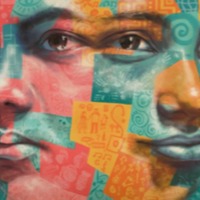
Sharmila Wijeyakumar
There are an estimated 403,000 people living in modern slavery in the United States (GSI 2018). Sex trafficking exists throughout the country. Traffickers use violence, threats, lies, debt bondage and other forms of coercion to compel adults and children to engage in commercial sex acts against their will. The situations that sex trafficking victims face vary, many victims become romantically involved with someone who then forces them into prostitution. Others are lured with false promises of a job, and some are forced to sell sex by members of their own families. Victims of sex trafficking include both foreign nationals and US citizens, with women making up the majority of those trafficked for the purposes of commercial sexual exploitation. In 2015, the most reported venues/industries for sex trafficking included commercial-front brothels, hotel/motel-based trafficking, online advertisements with unknown locations, residential brothels, and street-based sex trafficking. Sharmila ran away from her home when she was a teenager. She found herself working in a nightclub where she was trafficked for commercial sexual exploitation. Sharmila was helped to escape by a patron of the brothel where she was being kept. However, finding herself homeless she agreed to work in another brothel. She was rescued by her family from the second brothel. While training to be a chef in Florida, Sharmila finally felt safe enough to share her trafficking experience with people she knew. However, 48 hours after doing so, she was trafficked for a third time. A church helped Sharmila escape these traffickers and she now works for the organisation Rahab’s Daughters to help other people escape their traffickers.
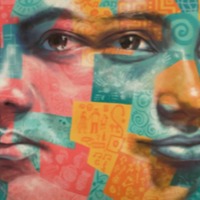
Penelope
There are an estimated 403,000 people living in modern slavery in the United States (GSI 2018). Sex trafficking exists throughout the country. Traffickers use violence, threats, lies, debt bondage and other forms of coercion to compel adults and children to engage in commercial sex acts against their will. The situations that sex trafficking victims face vary, many victims become romantically involved with someone who then forces them into prostitution. Others are lured with false promises of a job, and some are forced to sell sex by members of their own families. Victims of sex trafficking include both foreign nationals and US citizens, with women making up the majority of those trafficked for the purposes of commercial sexual exploitation. In 2015, the most reported venues/industries for sex trafficking included commercial-front brothels, hotel/motel-based trafficking, online advertisements with unknown locations, residential brothels, and street-based sex trafficking. Penelope’s* father became involved in criminal activity when she was a child which led to the repossession of their house. They moved into his friend’s house and when they became unable to pay rent, her father forced Penelope into child sexual exploitation, offering her to his friends as payment. One night when she was nine years old, Penelope was taken by her father’s friend and locked her in a room, where she was raped for days by adult men. After a few days of ‘breaking in’, Penelope was trafficked across the backroads of Mississippi, forced to see 15-20 men each night. After three years, Penelope’s mother came for her after being left by her father. It was a long road to recovery, Penelope entered into an abusive relationship as a teenager and suffered with alcohol addiction in college. She was finally able to receive help from a friend who introduced her to a church.
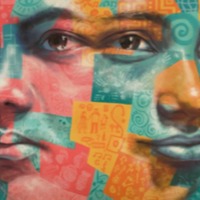
Avery
There are an estimated 403,000 people living in modern slavery in the United States (GSI 2018). Sex trafficking exists throughout the country. Traffickers use violence, threats, lies, debt bondage and other forms of coercion to compel adults and children to engage in commercial sex acts against their will. The situations that sex trafficking victims face vary, many victims become romantically involved with someone who then forces them into prostitution. Others are lured with false promises of a job, and some are forced to sell sex by members of their own families. Victims of sex trafficking include both foreign nationals and US citizens, with women making up the majority of those trafficked for the purposes of commercial sexual exploitation. In 2015, the most reported venues/industries for sex trafficking included commercial-front brothels, hotel/motel-based trafficking, online advertisements with unknown locations, residential brothels, and street-based sex trafficking. Avery* was 12 years old when she was trafficked into commercial sexual exploitation by a woman who promised her a job in modelling. She was kidnapped, beaten, raped, deprived of food and water, and when she returned home remained under the control of her trafficker until she was 18 years old.
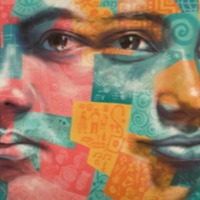
Mabel B
There are an estimated 403,000 people living in modern slavery in the United States (GSI 2018). Sex trafficking exists throughout the country. Traffickers use violence, threats, lies, debt bondage and other forms of coercion to compel adults and children to engage in commercial sex acts against their will. The situations that sex trafficking victims face vary, many victims become romantically involved with someone who then forces them into prostitution. Others are lured with false promises of a job, and some are forced to sell sex by members of their own families. Victims of sex trafficking include both foreign nationals and US citizens, with women making up the majority of those trafficked for the purposes of commercial sexual exploitation. In 2015, the most reported venues/industries for sex trafficking included commercial-front brothels, hotel/motel-based trafficking, online advertisements with unknown locations, residential brothels, and street-based sex trafficking. Mabel was trafficked into forced prostitution in the state of Nebraska. She draws on her experience to highlight the necessity of education and early intervention in the prevention of trafficking. Mabel underlines the importance of going beyond rescue, calling for allying and partnering with survivors to support them in their lives after trafficking.
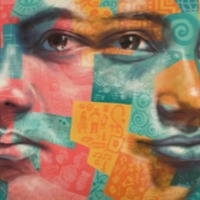
Miriam A.
There are an estimated 136,000 people living on conditions of modern slavery in the United Kingdom (Global Slavery Index 2018). According to the 2017 annual figures provided by the National Crime Agency, 5, 145 potential victims of modern slavery were referred through the National Referral Mechanism in 2017, of whom 2,454 were female, 2688 were male and 3 were transgender, with 41% of all referrals being children at the time of exploitation. People are subjected to slavery in the UK in the form of domestic servitude, labour exploitation, organ harvesting and sexual exploitation, with the largest number of potential victims originating from Albania, China, Vietnam and Nigeria. This data however does not consider the unknown numbers of victims that are not reported. Miriam A. was abused from a young age and into her marriage. She was offered the opportunity to come to Britain and start a new life away from abuse. She was promised the opportunity to study and that her children would join her later. Instead she was forced into domestic work, working 16 to 18 hours a day with no breaks. She was forced to do all cooking, cleaning, babysitting and care work. The family controlled when she slept, when she woke and what she ate. If she was allowed to speak to her children, her

A-Ching
There are an estimated 12,000 people living in modern slavery in Taiwan (GSI 2018). human traffickers subject foreign men and women to forced labor and sex trafficking in Taiwan, and traffickers subject local men and women to forced labor and local women and children to sex trafficking. Taiwan women and children are subjected to domestic sex trafficking, including as part of an increasing trend in which traffickers induce and exploit Taiwan and foreign women’s and children’s drug addictions. Taiwan traffickers increasingly use the internet, smartphone apps, livestreaming, and other such online technologies to conduct recruitment activities, often targeting child victims, and to mask their identities from law enforcement. Traffickers lure women from China and Southeast Asian countries to Taiwan through fraudulent marriages and deceptive employment offers for purposes of sex trafficking. Many trafficking victims are migrant workers from Indonesia, the Philippines, Thailand, Vietnam, and, to a lesser extent, individuals from China, Cambodia, and Sri Lanka. Taiwan is host to more than 700,000 foreign workers, most of whom are hired in their home countries through recruitment agencies and brokers—including some from Taiwan—to perform low-skilled work as home caregivers and domestic workers, or in farming, manufacturing, meat processing, construction, and fishing A-Ching travelled abroad to Taiwan for work as a cleaner. However, upon arrival she found she would be working instead at a karaoke bar and told that she owed her brokers money for taking her to Taiwan. A-Ching was sexually harassed and had her movement restricted.